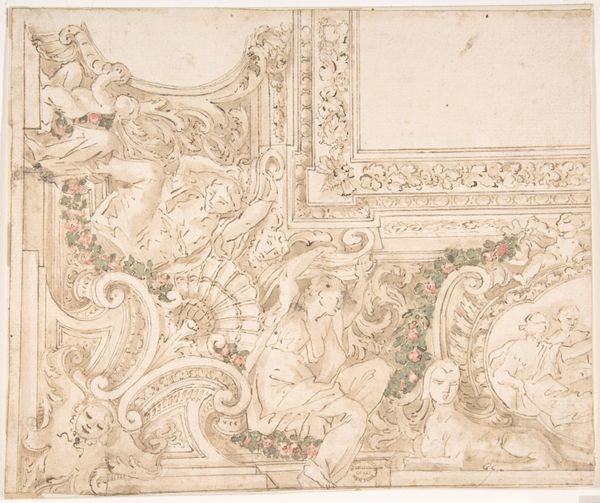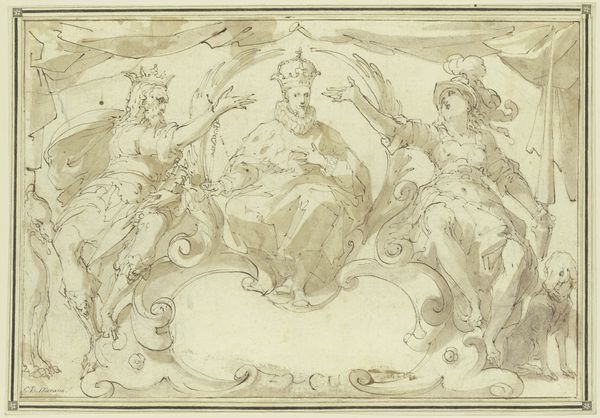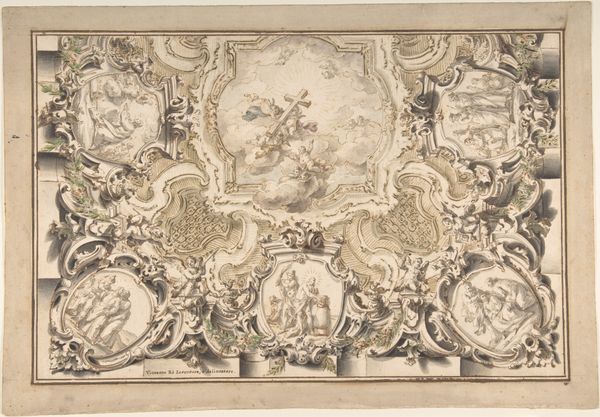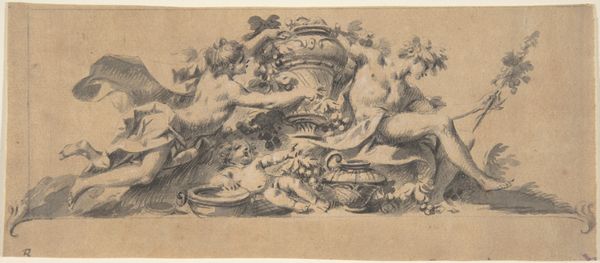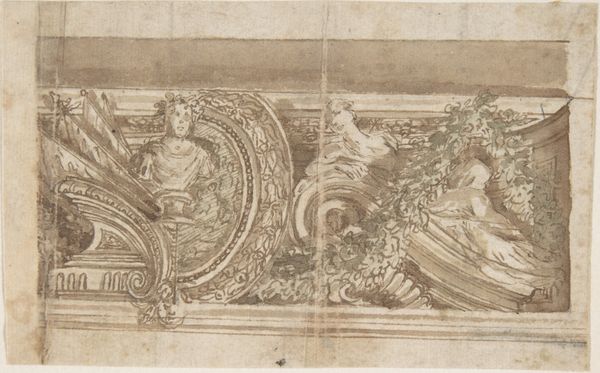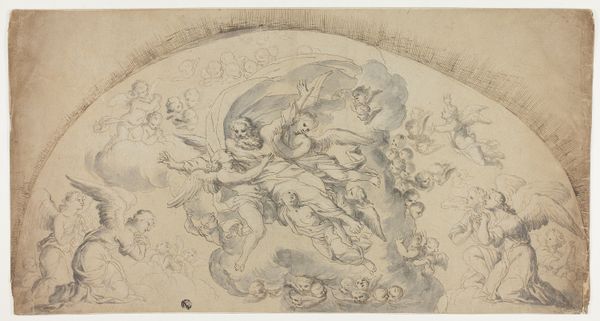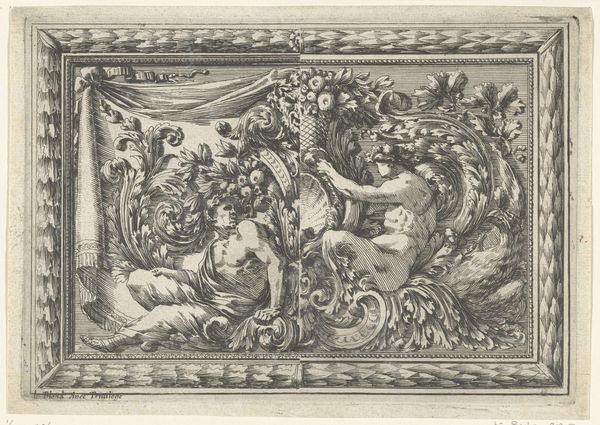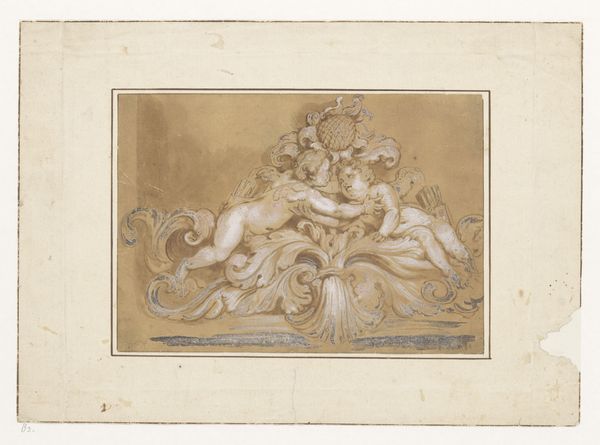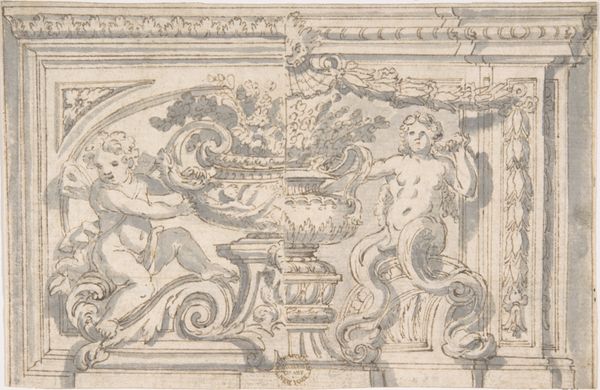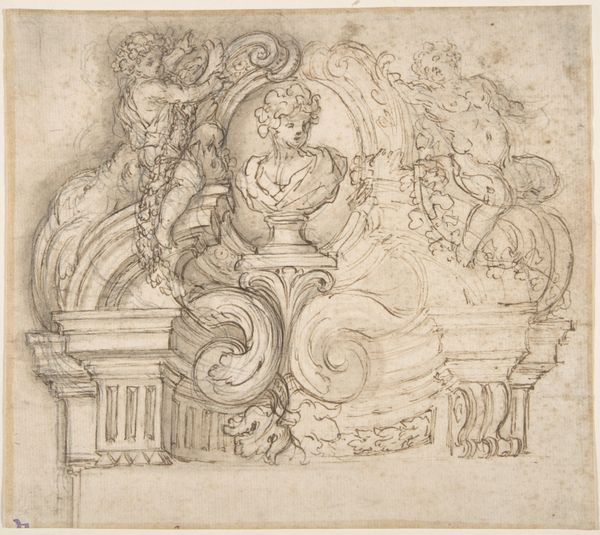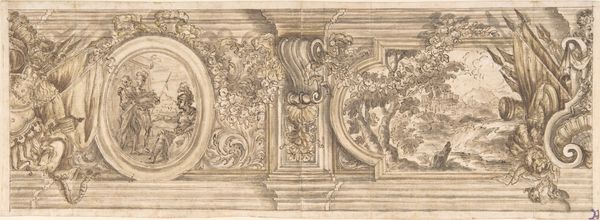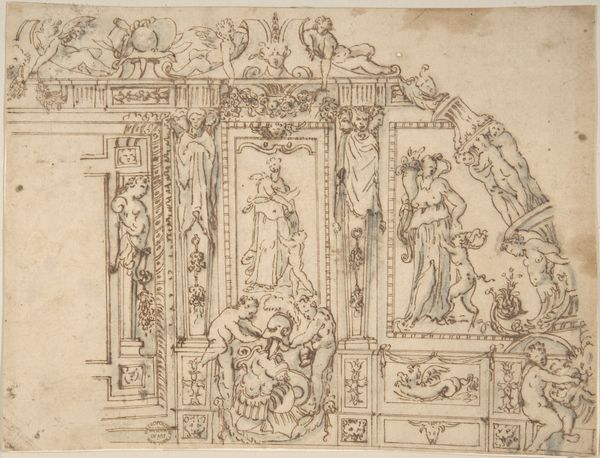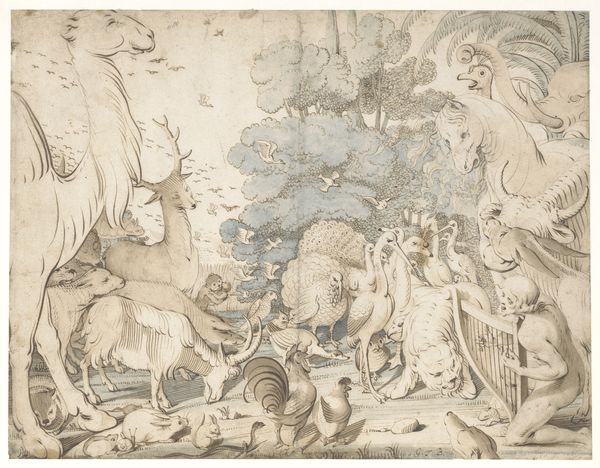
drawing, print, etching, ink, sculpture, pen
#
drawing
#
allegory
#
baroque
# print
#
etching
#
landscape
#
bird
#
etching
#
ink
#
sculpture
#
pen-ink sketch
#
pen
Dimensions: 8-3/4 x 21-1/8 in. (22.2 x 53.7 cm)
Copyright: Public Domain
Curator: Here we have an ink drawing titled "Ceiling Decoration," created by an anonymous artist sometime between 1600 and 1700. What are your first thoughts? Editor: My immediate impression is of something theatrical, almost like a stage set in monochrome. You can practically smell the pigment; the physical act of layering ink creates the drama. Curator: Indeed! The etching certainly emphasizes performative symbolism typical of Baroque sensibilities. We see allegorical figures, perhaps representations of virtue or mythological beings, amidst swirling foliage and ornate architectural details. Note the figure presenting a wreath. Editor: Look closely, it is fascinating how such detail could come from print. It makes me wonder who was involved in the making of the print – was it a single artist, or a collaborative effort from workshop? What labor was required, from initial sketch to final impression? And how did this production scale compared to say a painted fresco? Curator: These designs often circulated widely as models, influencing subsequent generations of artisans and designers. The shell, which acts like a picture frame to the deer motif, adds another symbolic layer of Renaissance influence which blends divine love and reason with hunt symbolism. Editor: Shells were luxury imports, I imagine – and framing the stag certainly elevate their power, status and connection between both animal figures as an indicator of prosperity. It highlights consumption. How readily available were printed drawings like these? The skill in handling the pen and ink makes me wonder, too, about access to these specific tools and the training they required. Curator: Printed images facilitated the circulation of ideas, democratizing visual culture, making the high art, or sculpture more easily disseminated through craft production and distribution. Editor: Thinking about the print in a contemporary art space is amazing, isn’t it? How the relationship between mass production, materiality, labour, and artistry have been understood over time – a tension we continue to navigate. Curator: Exactly. By exploring how printed forms perpetuate motifs, techniques, or imagery, it gives us insights into social memory and its material expression.
Comments
No comments
Be the first to comment and join the conversation on the ultimate creative platform.
